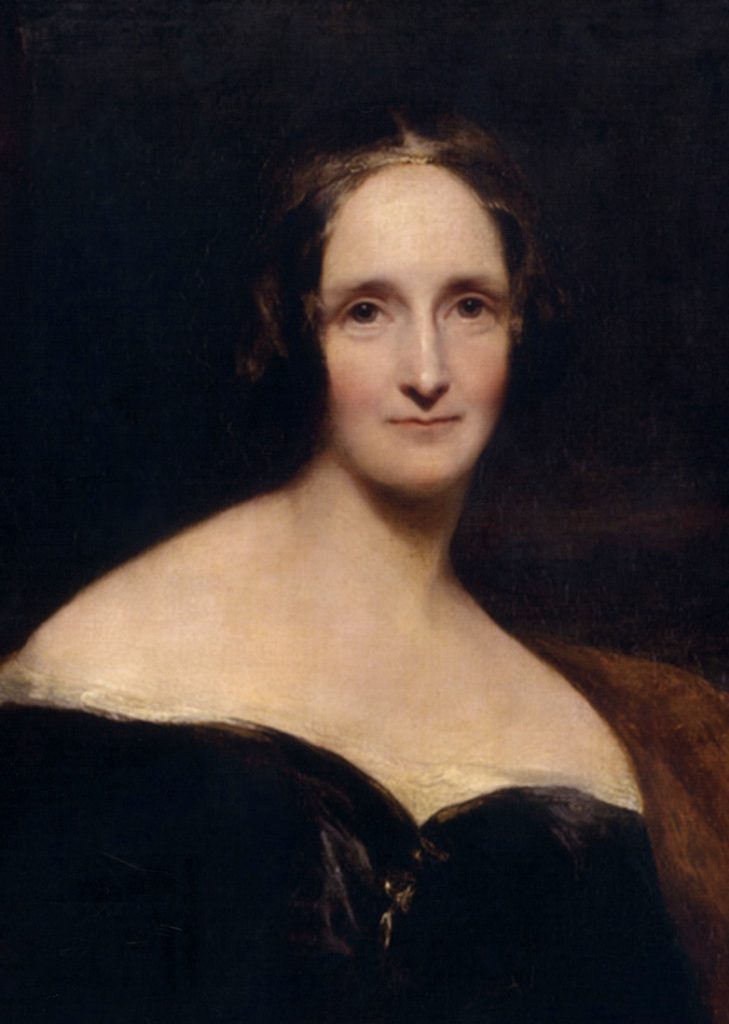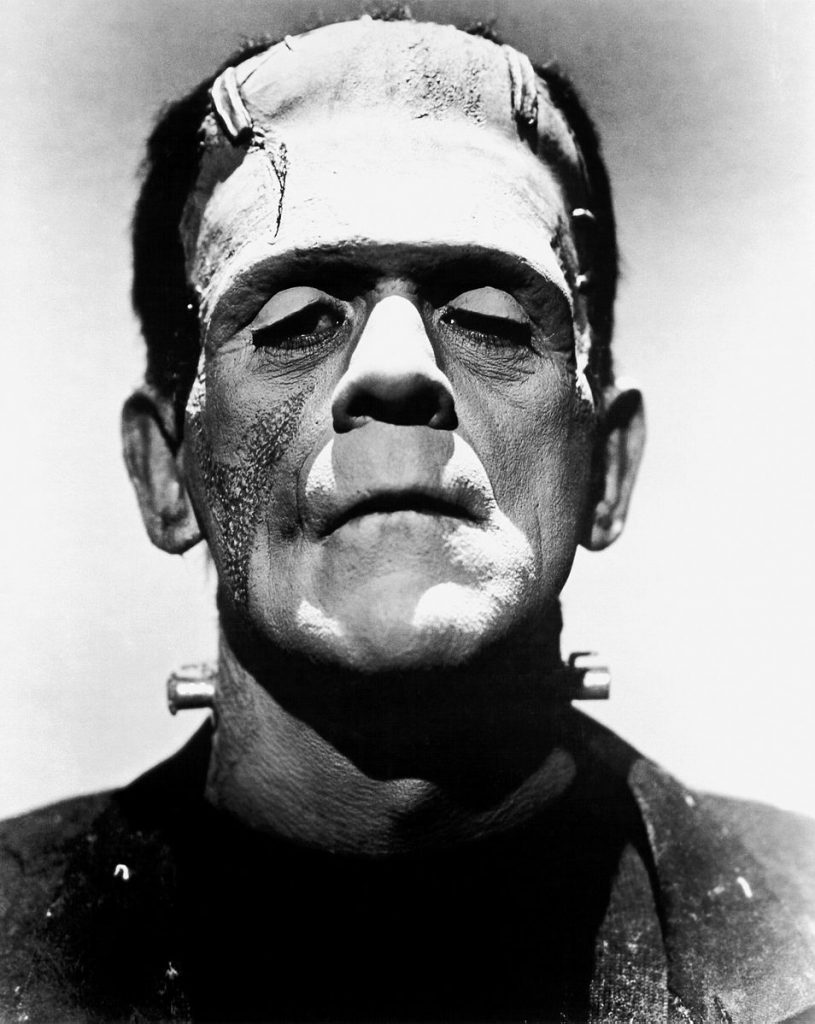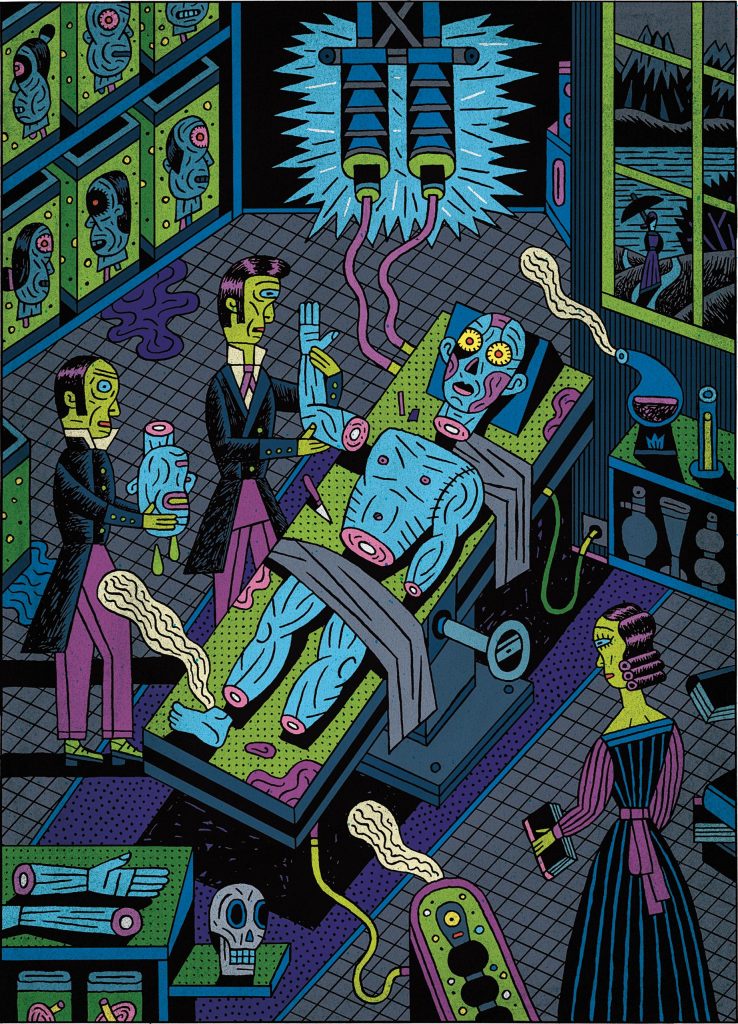1818 The Brains Behind Frankenstein
Marty Feldman in Young Frankenstein 1974 American comedy horror film
It’s time to get into the Halloween spirit with Mary Shelley’s famous novel Frankenstein.
Imagine being only 19 years old and publishing your own novel that would become an English literature classic for hundreds of years while having a great influence on pop culture. Mary Shelley really did that!
Without giving away spoilers to those who haven’t read it, it is a tale of scientist Victor Frankenstein who succeeds in giving life to a being of a creature constructed from dismembered corpses. However, this is not the perfect creation he imagines that it will be, but rather a grotesque creature who is rejected by his own creator and mankind. The monster is left desolate and desperately desires someone who will accept him as a friend, but as society cruelly rejects him the monster begins to seek vengeance and havoc breaks lose.

Portrait of Mary Shelley, c. 1840 
Title page of the first edition of Mary Shelley’s Frankenstein, or The Modern Prometheus, 1818.
Shelley’s work has inspired numerous films with the character of Frankensteins Monster (below), television programs, video games and derivative works.

The tale of creation and destruction has claimed a central place in Anglo-American culture since its first publication in 1818. Along the way, Frankenstein has come to stand for a genre we call Gothic. Though there are many ways to define what Gothic really is, for its conventions and their meanings depend upon the historical, ideological context in which they were created and construed. Cultural criticism endeavours to reconstruct Gothic, as far as it can, by exploring the ways in which its writers and readers understood its intention and its impact.
Gothic fiction emerged from 1760 to 1820, was associated with the development of new forms of popular literature. The emergence of accessible reading matter became a source of entertainment and was linked with the extension of literacy to new classes of readers; in turn, concerns about reading and its uses were part of larger debates over education, the location of power in society, and the nature and control of individual behaviour. The development of Gothic fiction, and of Mary Shelley’s novel, takes its meaning from the tensions informing these cultural concerns about human nature, its potentials and limits, and the forces that go into its making.
Gothic architecture that set the tone for the novel.

Frankenstein Castle (pictured above) is a hilltop castle in the Odenwald overlooking the city of Darmstadt in Germany. This dark, eye-catching architecture was said to have been an inspiration for Mary Shelley’s novel.
Architecture during this time played a role in the naming of Gothic novels, with many titles referring to castles or other common Gothic buildings. In fact, Frankenstein is a German name consisting of two words: The Franks are a Germanic tribe and “stein” is the German word for “stone”. Accordingly, the meaning of Frankenstein is “Stone of the Franks”. The word “stein” is common in names of landscapes, places and castles in Germany. Consequently, the term “Frankenstein” is a rather ordinary name for a castle in this region.
The history of Gothic as a style was complex, a narrative of how architecture affects art and how art affects architecture. The style began as a technological marvel in the Middle Ages, the epitome of stone construction and decoration, but was later shunned and abandoned in the Renaissance. The isolated, dilapidated, and haunting ruins of abandoned structures inspired Gothic stories of isolation, dilapidation, and the supernatural. Those dark romances then started a ‘Gothic Revival’ in architecture, producing buildings to echo the eerie grandeur of the stories that came before and the ruins that came before them.
There’s no doubt that the gothic architecture helped set the tone of Shelley’s novel.

Works Cited:
https://en.wikipedia.org/wiki/Frankenstein
https://www.history.com/this-day-in-history/frankenstein-published
http://origins.osu.edu/milestones/march-2018-mary-shelleys-frankenstein
https://lib.guides.umd.edu/c.php?g=741698&p=5306112
https://www.newyorker.com/magazine/2018/02/12/the-strange-and-twisted-life-of-frankenstein